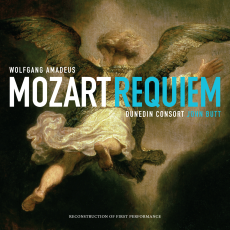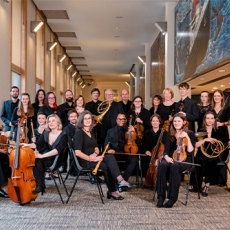Dunedin Consort - Mozart: Requiem - MusicWeb International
It is refreshing after so many modern attempted
completions of Mozart's Requiem to go back to that by Franz Süssmayr. The
detailed extent of his additions has been well known for many years and many
have felt that they could do better, understandably so given the weakness of
some of those additions. Nonetheless he had the clinching advantage of knowing
Mozart which gives his version a status which no modern composer can possibly
equal. The present recording makes use of a new edition by David Black of
Süssmayr's version which removes some spurious changes made in the first
published edition. Its main, and at times startling, novelty, however, is its
attempt to copy the forces and manner of the work's first public performance.
This was in Vienna on 2 January 1793 at a benefit concert for the composer's
widow arranged by Baron van Swieten. John Butt explains in his notes in the
booklet that although there is no direct evidence of the forces used on that
day it is reasonable to assume that they were similar to those used earlier for
the performances of Handel's works arranged by Mozart. That means a chorus that
is relatively small, only 16 in all including and led by the soloists who form
part of the chorus. The orchestra has 20 string players and includes a
fortepiano as no organ was available at that performance. Despite this however
there is no question of the orchestra outweighing the chorus as the latter sing
with particularly strong projection. The fortepiano is however to all intents
and purposes inaudible.
This is a
particularly purposeful and well considered performance. Passages which usually
present problems, such as the start of the "Tuba mirum", are simply made to
sound natural and appropriate with some eloquent and expert singing and
playing. The soloists may not have the international reputations of their
numerous rivals on other discs but they do understand their place in the whole,
and sing with sensitivity to the musical line and ensemble. Overall this is
indeed an especially coherent performance. There is no sense of apology for the
weaker parts of Süssmayr's completion. I would not want to be without earlier
classic performances using larger or differently constituted forces but I
expect to get much continuing pleasure and understanding from this version.
Two interesting
additional items are included. The setting of Misericordias Domini dates from 1775 but it appears that
it was revived for performance in about 1791. It is therefore performed with
similar forces to those used in the Requiem and makes an interesting
comparison. Finally the opening movements of the Requiem are performed as they
might have been at a Requiem Mass for the composer held shortly after his
death. This uses fewer singers or strings than in the complete performance and
omits some of the wind. Again it makes an interesting comparison but is
probably not something to be returned to frequently.
The main
performance, however, most certainly is. Its very individual approach to choral
sound and to the manner of the work's performance is endlessly fascinating.
Once again, as he has done before with the music of Bach, John Butt has
illuminated music by looking in detail at how and where it was performed in
specific circumstances at the time of its writing. The result has a combination
of purposeful vigour and sensitivity helped by a full and clear recording.
Overall it is an essential addition to any collection of Mozart's choral music.


